-
IP addresses are NOT logged in this forum so there's no point asking. Please note that this forum is full of homophobes, racists, lunatics, schizophrenics & absolute nut jobs with a smattering of geniuses, Chinese chauvinists, Moderate Muslims and last but not least a couple of "know-it-alls" constantly sprouting their dubious wisdom. If you believe that content generated by unsavory characters might cause you offense PLEASE LEAVE NOW! Sammyboy Admin and Staff are not responsible for your hurt feelings should you choose to read any of the content here. The OTHER forum is HERE so please stop asking.
You are using an out of date browser. It may not display this or other websites correctly.
You should upgrade or use an alternative browser.
You should upgrade or use an alternative browser.
Dubious distinctions for Singapore
- Thread starter LITTLEREDDOT
- Start date
If university rankings are pointless....
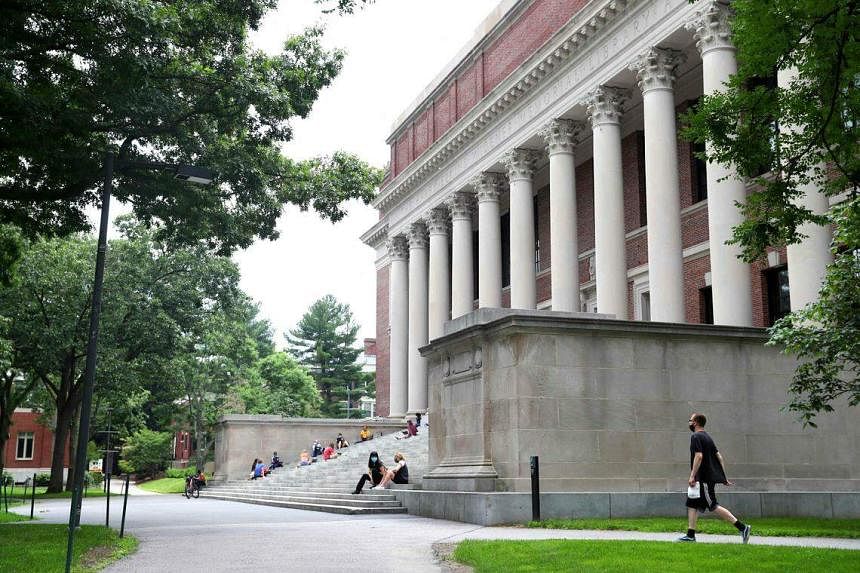
A number of prestigious US university law and medical schools have withdrawn from the US News & World Report ranking tables. PHOTO: AFP
Mar 30, 2023
A few weeks ago, I received an e-mail asking me to participate in an academic reputation survey for an organisation producing international university ranking tables. Soon after, The Straits Times reported that the National University of Singapore (NUS) and the Nanyang Technological University (NTU) had been rated the top universities in Asia based on the QS or Quacquarelli Symonds rankings by subject areas involving 1,594 universities in 93 countries and territories. A similar report in 2022 recapped how both also ranked well in the QS World University Rankings.
There are several other international ranking tables – like those published by Times Higher Education, Shanghai Jiao Tong University and US News & World Report. A key claim made by these organisations producing such tables is that they serve as guides to help students select universities and courses.
Many universities around the world await the publication of each round of ranking tables anxiously. They know the results come with high stakes, and may serve to boost a university’s international standing and inform its strategic goals.
Prospective employers may watch these rankings closely as they make hiring or deployment decisions. They may also shape some prospective students’ decisions over what and where to study.
These choices are increasingly vital as universities compete for students in the lucrative international student market. Market intelligence firm HolonIQ estimates that six million to nine million international students will enrol in foreign higher education institutions, with spending amounting to US$433 billion (S$575 billion) by 2030.
The ranking system simply ran against key institutional values, including a commitment to equity, diversity and inclusion, they argued.
Professor Stephen Joel Trachtenberg, former president of George Washington University, was also cited in a 2019 CNN report as saying that “schools feel pressure to game the rankings”.
Most focus on broadly similar performance indicators, albeit with differing weightages being accorded to the various indicators.
The QS 2023 rankings used indicators relating to academic reputation (teaching and research quality), employer reputation (how well universities prepare students for successful careers, and which universities provide competent, innovative and effective graduates), faculty/student ratio, academic citations per faculty member, international student ratio and international faculty ratio.
Part of this rankings data is also obtained through potentially subjective surveys based on sentiments or incomplete knowledge. The QS academic reputation survey is sent to thousands of academics around the world each year. Respondents are asked which country/territory and geographical region they are most familiar with.
They are then asked to provide, among other things, their individual nominations of top domestic and international institutions they think produce top research in their faculty area.
In 2020, Malaysian academics Muhammad Ashraf Fauzi, Christine Tan, Mahyuddin Daud and Muhammad Mukhtar Noor Awalludin demonstrated how the methodologies employed in ranking exercises can be prone to flaws, in a journal article in Issues In Educational Research.
Historically prestigious universities such as Cambridge and Oxford tend to have higher ratings. Western universities operating in English tend to receive higher rankings than their non-Western counterparts – even domestically prestigious institutions such as the National Taiwan University (ranked 77 in the latest QS tables) – reflecting the possibility that survey respondents tend to think of the more internationally prestigious universities that teach in English as superior.
A second problem arises because these tables do not reflect the varied purposes of higher education. Differences in each university’s key objectives in research, teaching and community service, and the great diversity of programmes offered in universities worldwide make it a pointless exercise to compare apples with oranges, durians and tomatoes.
A more poorly ranked university – such as Universiti Malaya – may excel in teaching or in other qualities contributing to nation-building compared with universities with higher rankings. Yet, such rankings compare different types of universities as though they are identical and accord equal weightages to all of their functions and educational offerings.
Even if we assume they are directly comparable, making the composite score meaningful, the nature of ranking tables magnifies minuscule differences in scores and separate institutions with similar scores by many numerical positions in the tables.
A third issue is that the tables fail to adequately indicate the processes and outcomes related to quality teaching and learning, and that students’ opinions are hardly, if ever, solicited in this regard.
A fourth major criticism is the heavy weightage accorded to research and institutional reputation rather than focusing on teaching quality. Academic Woo Jun Jie argued in a 2018 CNA commentary that this skewed emphasis on research may come at the cost of teaching quality as universities seeking to ascend the ranking tables are incentivised to devote extensive resources towards boosting research outcomes at the expense of adult learning.
Besides examination scores, personal interests and passions, parental aspirations and the amount of comprehensive information about the range of available options both within and outside of Singapore, other factors may include financial circumstances, family circumstances and peer influence. Some students may also consider fields that they believe are emerging areas of demand in the job market.
Much also depends on a prospective student’s life stage and purpose in pursuing higher education. Individuals with full-time jobs deciding whether to embark on a degree programme might likely give more consideration to the pros and cons of a full-time versus a part-time degree, in view of the opportunity cost involved in forgoing their income, compared with students fresh out of junior college or polytechnic.
Adult students must think more carefully about the implications for their families and financial commitments in giving up a job for a full-time degree programme.
And what are students to think of those among the six publicly funded autonomous universities, as well as the programmes in the autonomous universities, that have not been highly ranked, vis-a-vis those that have? It would be patently ridiculous to assume that those in the former category are somehow inferior and not worth serious consideration on the basis of this one point.
In their 2017 CNA commentary, academics Pang Eng Fong and Linda Lim highlghted the lack of empirical studies linking university rankings with student outcomes such as post-graduation job placement or salary rates. They also noted that international students did not appear to prefer the National University of Singapore (NUS) and the Nanyang Technological University (NTU) to the Singapore Management University (SMU) and other unranked universities, choosing their universities instead for a range of other reasons including costs and scholarship availability.
The Ministry of Education (MOE) website indicates that these six universities can be grouped into two categories: more academically focused, research-intensive universities (the NUS, the NTU, the SMU and the Singapore University of Technology and Design, with the first two being comprehensive and the next two being specialised) and those that provide applied-degree pathways, with more hands-on experience and industry exposure (the Singapore Institute of Technology and the Singapore University of Social Sciences).
In addition, there are also a number of programmes by private educational institutes such as the Singapore Institute of Management and Curtin University.
The diversity of providers within Singapore in terms of their institutional missions and programme offerings cannot possibly be captured in the ranking tables.
Thankfully, the QS website acknowledges the rankings are merely a starting point that cannot replace individual decision-making based on further research and information-gathering through exploring university websites, speaking to alumni and attending open-day events. Students should do their own homework rather than rely on ranking tables to light the way for them.
Similarly, employers today consider a range of other factors besides these institutional rankings when assessing the merits of job applicants and current employees. A range of non-academic skills and attributes – such as leadership qualities and communication abilities – not covered by the ranking tables matter.
A prominent theme emerging in recent years in Singapore discourse is that of broadening the definition of success, and moving away from a meritocracy of grades towards a meritocracy of skills.
There is an official drive to encourage multiple entry points to study for Singaporeans from varying ages and backgrounds, while making sure that a university education remains accessible and affordable. MOE has encouraged universities to provide students with options to customise degree programmes and expand the range of modules for adult learners. Another theme is the need for individuals to take charge of their learning.
In addition to the need to promote an understanding of, and interaction with, the world beyond Singapore, other issues include the encouragement of interdisciplinary learning and the need for universities to nurture graduates who define success in terms of their contributions to the wider society.
For this to work, cooperation rather than competition among the local universities is needed.
Speaking at the Straits Times Education Forum in February 2022, Education Minister Chan Chun Sing urged the six autonomous universities to operate as a single team, collaborating with one another and building on one another’s strengths. His remarks contrast with the tendency for the ranking tables to engender a zero-sum game mentality, where one university’s rise is accomplished only at another’s fall.
On another front, the recent Covid-19 pandemic has brought into focus the importance of addressing issues related to students’ mental well-being. The pandemic has also left in its wake questions about the adequacy of home-based learning as an alternative to face-to-face instruction, thus highlighting the importance of examining the merits of diverse instructional modes.
The autonomous universities have to, therefore, move beyond the limits imposed by international ranking tables, pursue their distinctive educational missions and find fields where cooperation with the rest is of mutual interest.
While the results of ranking exercises may prove helpful in the short term in terms of boosting institutional prestige, attracting research funding and attracting prospective students, it makes more sense instead to set independent priorities in the light of more pressing national priorities.
An immediate question would be the extent to which these desired outcomes can be quantified, when such ranking tables have proven poor in lending themselves well to quantification and measurement.
A related question concerns the desirability of subjecting the universities to yet more ranking, a practice likely to leave universities, students and employers grappling with yet more issues related to the adequacy of the ranking tables, at a time when secondary school and junior college rankings have been abolished.
In the final analysis, it is probably time for all of us to break the habit of reading more into the international ranking tables than they can tell us about what really matters in higher education.
This includes higher education’s primary functions at both the individual and collective levels: as a means of personal growth and development, a vehicle of social mobility and national prosperity, and a driver of service for the wider public good.
Why university rankings are pointless exercises for students in Singapore
A number of prominent universities have spoken out against such rankings, which cannot measure the multifaceted goals of higher education.
Jason Tan
A number of prestigious US university law and medical schools have withdrawn from the US News & World Report ranking tables. PHOTO: AFP
Mar 30, 2023
A few weeks ago, I received an e-mail asking me to participate in an academic reputation survey for an organisation producing international university ranking tables. Soon after, The Straits Times reported that the National University of Singapore (NUS) and the Nanyang Technological University (NTU) had been rated the top universities in Asia based on the QS or Quacquarelli Symonds rankings by subject areas involving 1,594 universities in 93 countries and territories. A similar report in 2022 recapped how both also ranked well in the QS World University Rankings.
There are several other international ranking tables – like those published by Times Higher Education, Shanghai Jiao Tong University and US News & World Report. A key claim made by these organisations producing such tables is that they serve as guides to help students select universities and courses.
Many universities around the world await the publication of each round of ranking tables anxiously. They know the results come with high stakes, and may serve to boost a university’s international standing and inform its strategic goals.
Prospective employers may watch these rankings closely as they make hiring or deployment decisions. They may also shape some prospective students’ decisions over what and where to study.
These choices are increasingly vital as universities compete for students in the lucrative international student market. Market intelligence firm HolonIQ estimates that six million to nine million international students will enrol in foreign higher education institutions, with spending amounting to US$433 billion (S$575 billion) by 2030.
Move to jettison international university rankings
Yet in more recent years, a number of prestigious US university law and medical schools – like those at Harvard (both of which ranked among the top 10 in their respective fields) – as well as a few undergraduate schools have withdrawn from the US News & World Report ranking tables.The ranking system simply ran against key institutional values, including a commitment to equity, diversity and inclusion, they argued.
Professor Stephen Joel Trachtenberg, former president of George Washington University, was also cited in a 2019 CNN report as saying that “schools feel pressure to game the rankings”.
How international university rankings are conducted
The reality is that such rankings are rarely scientific studies drawing clear conclusions. The trouble lies with the computation of scores.Most focus on broadly similar performance indicators, albeit with differing weightages being accorded to the various indicators.
The QS 2023 rankings used indicators relating to academic reputation (teaching and research quality), employer reputation (how well universities prepare students for successful careers, and which universities provide competent, innovative and effective graduates), faculty/student ratio, academic citations per faculty member, international student ratio and international faculty ratio.
Part of this rankings data is also obtained through potentially subjective surveys based on sentiments or incomplete knowledge. The QS academic reputation survey is sent to thousands of academics around the world each year. Respondents are asked which country/territory and geographical region they are most familiar with.
They are then asked to provide, among other things, their individual nominations of top domestic and international institutions they think produce top research in their faculty area.
Brewing criticism over university rankings
Such international ranking tables have attracted a great deal of criticism from academic researchers and universities in recent years.In 2020, Malaysian academics Muhammad Ashraf Fauzi, Christine Tan, Mahyuddin Daud and Muhammad Mukhtar Noor Awalludin demonstrated how the methodologies employed in ranking exercises can be prone to flaws, in a journal article in Issues In Educational Research.
Historically prestigious universities such as Cambridge and Oxford tend to have higher ratings. Western universities operating in English tend to receive higher rankings than their non-Western counterparts – even domestically prestigious institutions such as the National Taiwan University (ranked 77 in the latest QS tables) – reflecting the possibility that survey respondents tend to think of the more internationally prestigious universities that teach in English as superior.
A second problem arises because these tables do not reflect the varied purposes of higher education. Differences in each university’s key objectives in research, teaching and community service, and the great diversity of programmes offered in universities worldwide make it a pointless exercise to compare apples with oranges, durians and tomatoes.
A more poorly ranked university – such as Universiti Malaya – may excel in teaching or in other qualities contributing to nation-building compared with universities with higher rankings. Yet, such rankings compare different types of universities as though they are identical and accord equal weightages to all of their functions and educational offerings.
Even if we assume they are directly comparable, making the composite score meaningful, the nature of ranking tables magnifies minuscule differences in scores and separate institutions with similar scores by many numerical positions in the tables.
A third issue is that the tables fail to adequately indicate the processes and outcomes related to quality teaching and learning, and that students’ opinions are hardly, if ever, solicited in this regard.
A fourth major criticism is the heavy weightage accorded to research and institutional reputation rather than focusing on teaching quality. Academic Woo Jun Jie argued in a 2018 CNA commentary that this skewed emphasis on research may come at the cost of teaching quality as universities seeking to ascend the ranking tables are incentivised to devote extensive resources towards boosting research outcomes at the expense of adult learning.
Some perspective on university rankings
Such rankings are rarely helpful for prospective students. The process of selecting a university, course of study and concentration, whether local or overseas, depends on a complex mix of factors.Besides examination scores, personal interests and passions, parental aspirations and the amount of comprehensive information about the range of available options both within and outside of Singapore, other factors may include financial circumstances, family circumstances and peer influence. Some students may also consider fields that they believe are emerging areas of demand in the job market.
Much also depends on a prospective student’s life stage and purpose in pursuing higher education. Individuals with full-time jobs deciding whether to embark on a degree programme might likely give more consideration to the pros and cons of a full-time versus a part-time degree, in view of the opportunity cost involved in forgoing their income, compared with students fresh out of junior college or polytechnic.
Adult students must think more carefully about the implications for their families and financial commitments in giving up a job for a full-time degree programme.
And what are students to think of those among the six publicly funded autonomous universities, as well as the programmes in the autonomous universities, that have not been highly ranked, vis-a-vis those that have? It would be patently ridiculous to assume that those in the former category are somehow inferior and not worth serious consideration on the basis of this one point.
In their 2017 CNA commentary, academics Pang Eng Fong and Linda Lim highlghted the lack of empirical studies linking university rankings with student outcomes such as post-graduation job placement or salary rates. They also noted that international students did not appear to prefer the National University of Singapore (NUS) and the Nanyang Technological University (NTU) to the Singapore Management University (SMU) and other unranked universities, choosing their universities instead for a range of other reasons including costs and scholarship availability.
Singapore’s varied university landscape
University rankings are also less useful in aiding Singapore students to navigate the diverse local university landscape.The Ministry of Education (MOE) website indicates that these six universities can be grouped into two categories: more academically focused, research-intensive universities (the NUS, the NTU, the SMU and the Singapore University of Technology and Design, with the first two being comprehensive and the next two being specialised) and those that provide applied-degree pathways, with more hands-on experience and industry exposure (the Singapore Institute of Technology and the Singapore University of Social Sciences).
In addition, there are also a number of programmes by private educational institutes such as the Singapore Institute of Management and Curtin University.
The diversity of providers within Singapore in terms of their institutional missions and programme offerings cannot possibly be captured in the ranking tables.
Thankfully, the QS website acknowledges the rankings are merely a starting point that cannot replace individual decision-making based on further research and information-gathering through exploring university websites, speaking to alumni and attending open-day events. Students should do their own homework rather than rely on ranking tables to light the way for them.
Similarly, employers today consider a range of other factors besides these institutional rankings when assessing the merits of job applicants and current employees. A range of non-academic skills and attributes – such as leadership qualities and communication abilities – not covered by the ranking tables matter.
Growing emphasis on upskilling and mental health
These ranking leagues are even less useful for local autonomous universities, as the educational landscape evolves to embrace larger goals of creating more pathways to success and empowering individuals to reach their fuller potential through upskilling.A prominent theme emerging in recent years in Singapore discourse is that of broadening the definition of success, and moving away from a meritocracy of grades towards a meritocracy of skills.
There is an official drive to encourage multiple entry points to study for Singaporeans from varying ages and backgrounds, while making sure that a university education remains accessible and affordable. MOE has encouraged universities to provide students with options to customise degree programmes and expand the range of modules for adult learners. Another theme is the need for individuals to take charge of their learning.
In addition to the need to promote an understanding of, and interaction with, the world beyond Singapore, other issues include the encouragement of interdisciplinary learning and the need for universities to nurture graduates who define success in terms of their contributions to the wider society.
For this to work, cooperation rather than competition among the local universities is needed.
Speaking at the Straits Times Education Forum in February 2022, Education Minister Chan Chun Sing urged the six autonomous universities to operate as a single team, collaborating with one another and building on one another’s strengths. His remarks contrast with the tendency for the ranking tables to engender a zero-sum game mentality, where one university’s rise is accomplished only at another’s fall.
On another front, the recent Covid-19 pandemic has brought into focus the importance of addressing issues related to students’ mental well-being. The pandemic has also left in its wake questions about the adequacy of home-based learning as an alternative to face-to-face instruction, thus highlighting the importance of examining the merits of diverse instructional modes.
The autonomous universities have to, therefore, move beyond the limits imposed by international ranking tables, pursue their distinctive educational missions and find fields where cooperation with the rest is of mutual interest.
While the results of ranking exercises may prove helpful in the short term in terms of boosting institutional prestige, attracting research funding and attracting prospective students, it makes more sense instead to set independent priorities in the light of more pressing national priorities.
A Singapore ranking table?
Some have asked whether MOE should devise its own ranking tables for the autonomous universities based on criteria more attuned to the Singapore context.An immediate question would be the extent to which these desired outcomes can be quantified, when such ranking tables have proven poor in lending themselves well to quantification and measurement.
A related question concerns the desirability of subjecting the universities to yet more ranking, a practice likely to leave universities, students and employers grappling with yet more issues related to the adequacy of the ranking tables, at a time when secondary school and junior college rankings have been abolished.
In the final analysis, it is probably time for all of us to break the habit of reading more into the international ranking tables than they can tell us about what really matters in higher education.
This includes higher education’s primary functions at both the individual and collective levels: as a means of personal growth and development, a vehicle of social mobility and national prosperity, and a driver of service for the wider public good.
- Jason Tan is Associate Professor in Policy, Curriculum and Leadership at the National Institute of Education.
....then why do the Shitty Times continue to brag about the high rankings of NUS and NTU?
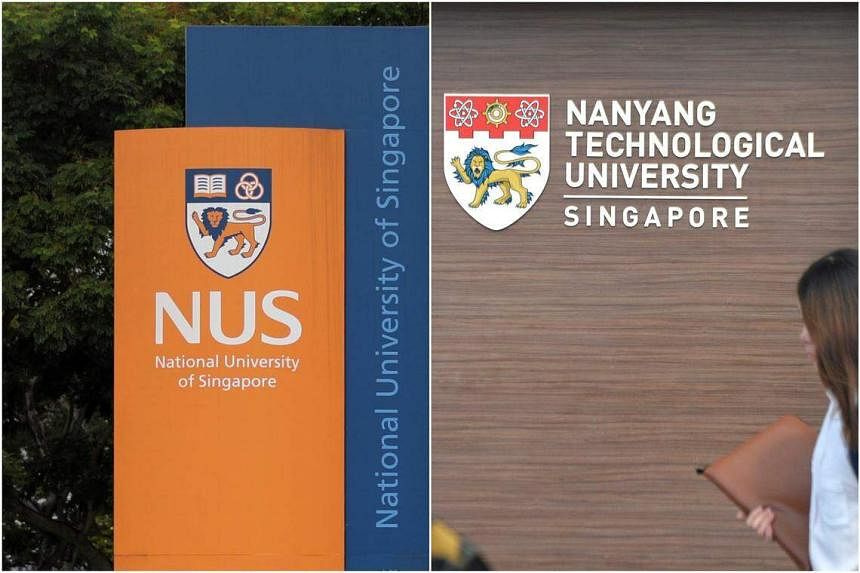
The National University of Singapore had 14 subjects ranked in the top 10 and 40 in the top 50, while the Nanyang Technological University had five subjects in the top 10. PHOTOS: ST FILE

Sandra Davie
Senior Education Correspondent
MAR 23, 2023
SINGAPORE – The National University of Singapore (NUS) and Nanyang Technological University (NTU) have again emerged as the top universities in Asia based on global rankings by subjects.
The 2023 instalment of the QS World University Rankings by Subject ranked 91 programmes at five Singaporean universities. The league tables were released on Wednesday.
NUS had 14 subjects ranked in the top 10 and 40 in the top 50. Among the subjects in the top 10 were history of art, civil and structural engineering, and geography.
NTU had five subjects in the top 10, including materials science, communications and media studies, and three engineering disciplines.
In the 2022 subject rankings, NUS and NTU had 23 courses – 16 from NUS and seven from NTU – that made it to the global top 10 lists.
Singapore Management University (SMU) achieved two top 50 rankings – business and management studies (ranked 43) and accounting (49).
The Singapore University of Technology and Design was ranked for three subjects. Architecture and art and design were both placed in the 151-200 band.
The rankings, compiled by global higher education analysts QS Quacquarelli Symonds, are based on an analysis of more than 15,700 individual academic programmes at 1,594 universities in 93 countries and territories, including 388 universities in Asia.
In a repeat of the 2022 rankings, NUS and NTU ranked higher than Chinese, Japanese and Hong Kong universities, in terms of the number of top 10 programmes.
However, QS cautioned Singapore universities on the decline in rankings for 49 of their 91 programmes that were evaluated.
QS senior vice-president Ben Sowter said: “Singapore’s universities have become used to operating at the very top of the global higher education ecosystem, which is both a testament to its success but also exposes it to the same vulnerabilities faced by well-established elite tertiary education sectors the world over – that of maintaining exceptional quality in the face of rising global competition – often posed by emergent economies looking to follow in its footsteps.”
Globally, universities in the United States had the highest number of top 10 programmes (256), followed by the United Kingdom with 145 and Switzerland with 32.
Universities in the United States took the top spot in 32 subjects, with Harvard University ranking first in 14, and the Massachusetts Institute of Technology claiming the lead in 11.
British universities topped 14 subject tables, with Oxford and Cambridge leading in four and two subjects, respectively.
NUS and NTU are top two Asian universities again in subject rankings

The National University of Singapore had 14 subjects ranked in the top 10 and 40 in the top 50, while the Nanyang Technological University had five subjects in the top 10. PHOTOS: ST FILE

Sandra Davie
Senior Education Correspondent
MAR 23, 2023
SINGAPORE – The National University of Singapore (NUS) and Nanyang Technological University (NTU) have again emerged as the top universities in Asia based on global rankings by subjects.
The 2023 instalment of the QS World University Rankings by Subject ranked 91 programmes at five Singaporean universities. The league tables were released on Wednesday.
NUS had 14 subjects ranked in the top 10 and 40 in the top 50. Among the subjects in the top 10 were history of art, civil and structural engineering, and geography.
NTU had five subjects in the top 10, including materials science, communications and media studies, and three engineering disciplines.
In the 2022 subject rankings, NUS and NTU had 23 courses – 16 from NUS and seven from NTU – that made it to the global top 10 lists.
Singapore Management University (SMU) achieved two top 50 rankings – business and management studies (ranked 43) and accounting (49).
The Singapore University of Technology and Design was ranked for three subjects. Architecture and art and design were both placed in the 151-200 band.
The rankings, compiled by global higher education analysts QS Quacquarelli Symonds, are based on an analysis of more than 15,700 individual academic programmes at 1,594 universities in 93 countries and territories, including 388 universities in Asia.
In a repeat of the 2022 rankings, NUS and NTU ranked higher than Chinese, Japanese and Hong Kong universities, in terms of the number of top 10 programmes.
However, QS cautioned Singapore universities on the decline in rankings for 49 of their 91 programmes that were evaluated.
QS senior vice-president Ben Sowter said: “Singapore’s universities have become used to operating at the very top of the global higher education ecosystem, which is both a testament to its success but also exposes it to the same vulnerabilities faced by well-established elite tertiary education sectors the world over – that of maintaining exceptional quality in the face of rising global competition – often posed by emergent economies looking to follow in its footsteps.”
Globally, universities in the United States had the highest number of top 10 programmes (256), followed by the United Kingdom with 145 and Switzerland with 32.
Universities in the United States took the top spot in 32 subjects, with Harvard University ranking first in 14, and the Massachusetts Institute of Technology claiming the lead in 11.
British universities topped 14 subject tables, with Oxford and Cambridge leading in four and two subjects, respectively.
So what, you were not competing with the best students in Singapore ( they do not need to sit O level).I was once a top N Level student too and I got A1 for all my six subjects
Singapore private homes now priciest to own and rent in Asia-Pacific in absolute terms: Report
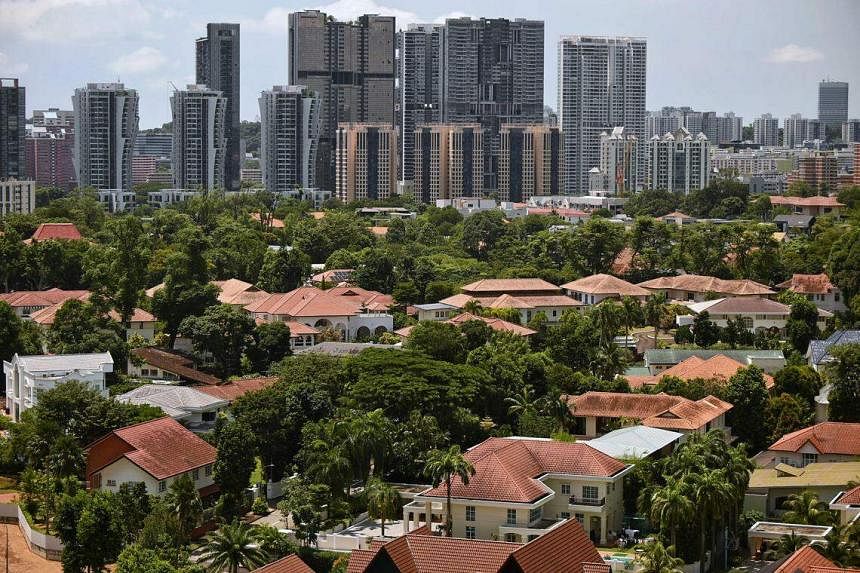
In absolute terms, the median price of Singapore’s private homes have overtaken those of Hong Kong. PHOTO: ST FILE
Bryan Kow
May 30, 2023
SINGAPORE - Private residential property in Singapore is now the most expensive in the Asia-Pacific in terms of absolute prices, overtaking Hong Kong in 2022, according to a report released by the Urban Land Institute (ULI) on Tuesday.
ULI said the median price of Singapore’s private homes now stands at US$1.2 million (S$1.6 million), compared with Hong Kong at US$1.16 million. In the next highest market, Sydney single-family homes were a median US$980,000.
Singapore’s median private home prices rose about 8 per cent in 2022 whereas those in Hong Kong fell almost 9 per cent amid strict Covid-19 curbs, the report found.
On a per square metre (psm) basis though, Hong Kong is still the most costly private housing market in the region by far.
In 2022, the average psm price for a private home in Hong Kong was US$19,768, equivalent to US$1,836 per square foot (S$2,485 psf) - more than twice the median figures for cities such as Singapore, Tokyo Ku, Shenzhen, Beijing, and Shanghai.
In general, home ownership in Singapore is high at 90 per cent and is accessible due to the large supply of public housing, ULI noted.
“In contrast, other gateway cities such as Hong Kong, Shanghai, Tokyo, and Seoul have relatively low homeownership rates, reflecting high home prices and the more migratory nature of the populations in gateway cities,” it said.
But the affordability ratio of Singapore private homes now stands at 13.7, placing them in the unaffordable range, said ULI.
Homeownership is considered unaffordable when the ratio of the median home price to median annual household income exceeds 5. Across the cities tracked by ULI, median annual household income was highest in Singapore at US$87,900.
Shenzhen homes ranked least affordable with a ratio of about 35, while Hong Kong’s ratio fell to 26.5.
Data compiled by ULI showed also that the median price of a resale Housing and Development Board (HDB) flat rose 7.9 per cent from US$379,000 to US$409,000 (S$554,000) in 2022. With that, the affordability ratio of HDB resale flats has also crept up from 4.5 to 4.7.
Still, including public housing, Singapore housing is ranked “most attainable” in ULI’s 2023 Asia Pacific Home Attainability Index, with the median price of HDB resale flats at 4.7 times the median annual income.
“Meanwhile, home attainability is severely challenged in Tier 1 and leading Tier 2 cities in mainland China, Hong Kong, Metro Manila, Metro Cebu, Ho Chi Minh City, and Danang with median home prices at approximately 20 to 35 times median household income,” ULI said.
In rentals, Singapore’s private homes chalked up a median monthly rent of US$2,596, which is 53 per cent higher than Hong Kong’s median monthly rent of US$1,686 and overtaking other high cost-of-living cities like Tokyo (US$602) and Seoul (US$689).
This comes after Singapore’s median monthly rents increased by 29.7 per cent in 2022.
Factors such as construction delays, a sudden surge in the number of migrants and a relatively limited stock of institutionally or individually owned rental properties contributed to the rising market, said ULI.
The median monthly rent for private homes in Singapore represents 35 per cent of the overall median household income.
“However, as most renters of private-sector homes (in Singapore) have higher than median income, the monthly rent amount should be a significantly smaller percentage of the renter’s monthly income,” ULI noted. THE BUSINESS TIMES
Singapore is most expensive city for high-net-worth individuals to live well: report

Tan Nai Lun
Jun 20, 2023According to the Julius Baer report, Asia remains the costliest region for HNWIs to live well for the fourth year in a row, with Singapore, Shanghai and Hong Kong ranking top three in the Lifestyle Index.
SINGAPORE has, for the first time, become the most expensive city for high-net-worth individuals (HNWIs) to live well, said a report by Swiss private bank Julius Baer on Tuesday (Jun 20).
In its Global Wealth and Lifestyle Report 2023, Asia remains the costliest region for HNWIs to live well for the fourth year in a row. Shanghai, the most expensive city in the ranking last year, took second place, while Hong Kong rose a spot to take third place in the Lifestyle Index ranking of 25 cities.
The Lifestyle Index is based on a basket of 12 consumer goods and eight services that represent discretionary purchases by HNWIs. The data was collected between November 2022 and March 2023.
Singapore’s ranking is likely due to the strong demand for accommodation, school places and a generally significant cost of living.
At a media roundtable, Julius Baer head of Asia-Pacific research Mark Matthews said Singapore’s rise to become the most expensive city may be a reflection of rising property prices as well as the high cost of owning cars in the country.
He noted that residential property has the biggest weightage in the index, followed by cars.
Speaking on the outlook for high-end property in Singapore, Chua Jen-Ai, a research analyst at Julius Baer, expects the latest round of property cooling measures will keep demand muted among wealthy foreigners.
While wealthy foreigners are likely able to afford an additional 60 per cent in Additional Buyer’s Stamp Duty (ABSD), Chua said the measures represent a signal from the government that it might not want to see much more demand in the high-end property sector in the short term.
She noted that the market is “pretty segmented”, however, and the mass market is largely unaffected by the 60 per cent increase in ABSD and remains relatively stable.
In Singapore, more than half of the items in the Lifestyle Index ranked among the top three most expensive regionally, although Singapore prices have not risen the most in the region on average, the report found.
Overall, 2023 has had the most balanced ranking in terms of regional diversity for the top 10 most expensive cities – comprising four cities from Asia, three from Europe and the Middle East, and three from the Americas.
Globally, wine and whisky saw the sharpest rise in prices, followed by hotels, flights and cars. With travel restrictions no longer an issue, travel for both leisure and work is rising and respondents are increasingly spending on flights, particularly in the Asia-Pacific region.
But Matthews noted that the overall price changes are more rational compared to the bigger price swings in 2022.
The report also found that fine dining and hotels are the biggest products and services that the HNWIs have spent more money on in the past 12 months.
In the Asia-Pacific region alone, 63 per cent of those surveyed said they spent more on fine dining, and 56 per cent said they spent more on hotels.
Matthews drew a comparison between the post-pandemic increase in spending on luxury consumables, to the decade of indulgence in the 1920s following the 1918 flu.
“There’s a bit of Great Gatsby in the air, just like the 1920s were full of revelry after the 1918 flu,” he said. “Maybe there’s something like that happening today: people realise that life’s too short or just want to enjoy themselves.”
The Lifestyle Survey also found that fitness and well-being practices, health insurance, education and family and financial resilience are top priorities for the HNWIs, to help prepare for future disruptions.
In particular, 54 per cent of respondents in the Asia-Pacific region said they spent more on health insurance in the past 12 months, likely because they are looking into their future more than they did before the pandemic, Matthews said.
S’pore money laundering case among world’s largest with assets seized worth over $2.8b

Following islandwide raids on Aug 15, assets seized or issued with prohibition of disposal orders are now worth more than $2.8 billion. PHOTOS: SINGAPORE POLICE FORCE

Nadine Chua
OCT 3, 2023
SINGAPORE – The first sign of trouble, that something big was afoot, came in 2021 when the authorities noticed possibly forged documents being used to substantiate sources of funds in bank accounts here.
So as not to alert the suspected money launderers, only a small group of police officers was involved in initial investigations.
After an extensive probe in 2022, the police uncovered a web of people allegedly transferring money to Singapore from abroad that was suspected to be earned from criminal activities. Some of the people were connected by family ties.
The assets seized or issued with prohibition of disposal orders following islandwide raids conducted on Aug 15 are now worth more than $2.8 billion, making it one of the world’s largest money laundering cases.
Second Minister for Home Affairs Josephine Teo said this in a ministerial statement on Tuesday to address about 60 parliamentary questions filed on the case.
She said the authorities were alerted in 2021 when they picked up several signals, including the use of suspected forged documents to support sources of funds in bank accounts here.
Some suspicious transaction reports (STRs) were filed by financial institutions and other companies, and the police investigated these alerts.
In early 2022, the police launched an extensive intelligence probe that uncovered a web of people believed to be connected to one another, including by familial ties.
Mrs Teo said: “The police analysed the information and probed further, quietly. To avoid alerting the suspects, the work was kept to a very small group of officers, and a decision was made to hold off any enforcement or overt investigative actions.”
She said the aim of the police was to develop as full a picture as possible of the suspects and their associates, their suspected criminal activities and their assets, before moving against them.
Mrs Teo added: “As the probe progressed, the web uncovered by the police grew and grew.
“More and more individuals were implicated in the alleged money laundering operation, and more and more of their assets held in Singapore were discovered. The police painstakingly and discreetly traced their ties and assets.”
She highlighted that anti-money laundering probes of this scale and nature are complex.
She said: “Had the suspects caught wind of our probes, the suspects and their assets might have fled, and the investigations and the entire operation might have been jeopardised.”
Mrs Teo said that earlier in 2023, the police consulted the Attorney-General’s Chambers, which decided there was sufficient reason to suspect that the criminal offences had been committed in Singapore.
Following extensive reviews of information and evidence, the police conducted a massive islandwide blitz on Aug 15 that involved more than 400 officers led by the Commercial Affairs Department.
Nine men and one woman were arrested and charged the next day with offences including money laundering, forgery and resisting arrest.
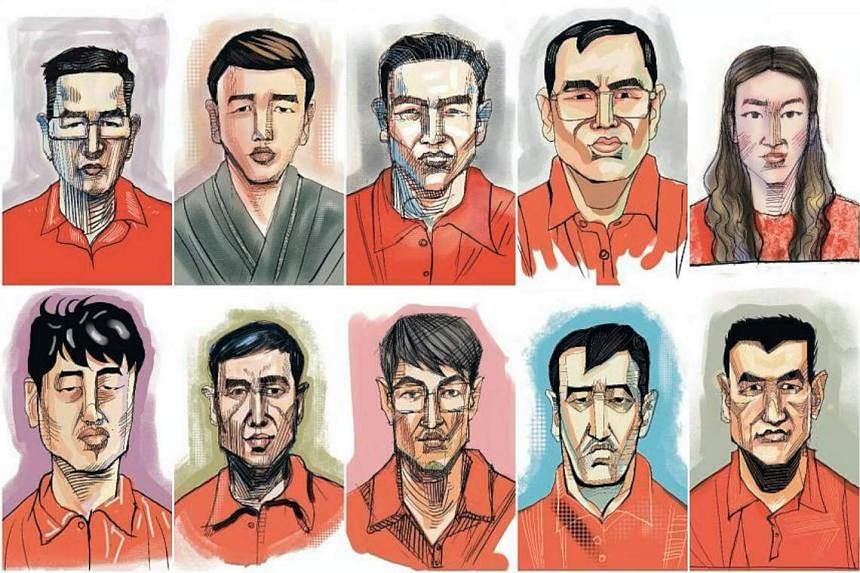
The 10 suspects are (clockwise from top left) Su Baolin, Su Haijin, Chen Qingyuan, Su Wenqiang, Lin Baoying, Zhang Ruijin, Wang Dehai, Su Jianfeng, Vang Shuiming and Wang Baosen. ST ILLUSTRATIONS: CEL GULAPA
It is Singapore’s worst money laundering case so far.
Addressing reports from international and domestic news outlets that the operation had been done at the behest of China, Mrs Teo said: “This is completely untrue. Singapore does not need another country to tell us what to do to enforce our laws, nor will we do anything unless it is in our own interests.
“In this case, we started investigations because we suspected that offences had been committed in Singapore. Once we confirmed our suspicions, we acted.”
In an update on the case, which is now before the courts, Mrs Teo said the proceeds most likely came from criminal activities abroad, including illegal online gambling and unlicensed moneylending.
There are others who have not been arrested but are assisting with investigations, she said. Other individuals are wanted by the police for investigations, but are not in Singapore.
She said the police had conducted further operations, and the authorities have taken control of over $2.8 billion worth of assets.
These assets include 152 properties and 62 vehicles with an estimated value of more than $1.24 billion, money in bank accounts amounting to more than $1.45 billion, and cash of various currencies worth more than $76 million.
Other items include thousands of bottles of liquor and wine, cryptocurrency worth more than $38 million, 68 gold bars, 294 luxury bags, 164 branded watches and 546 pieces of jewellery.
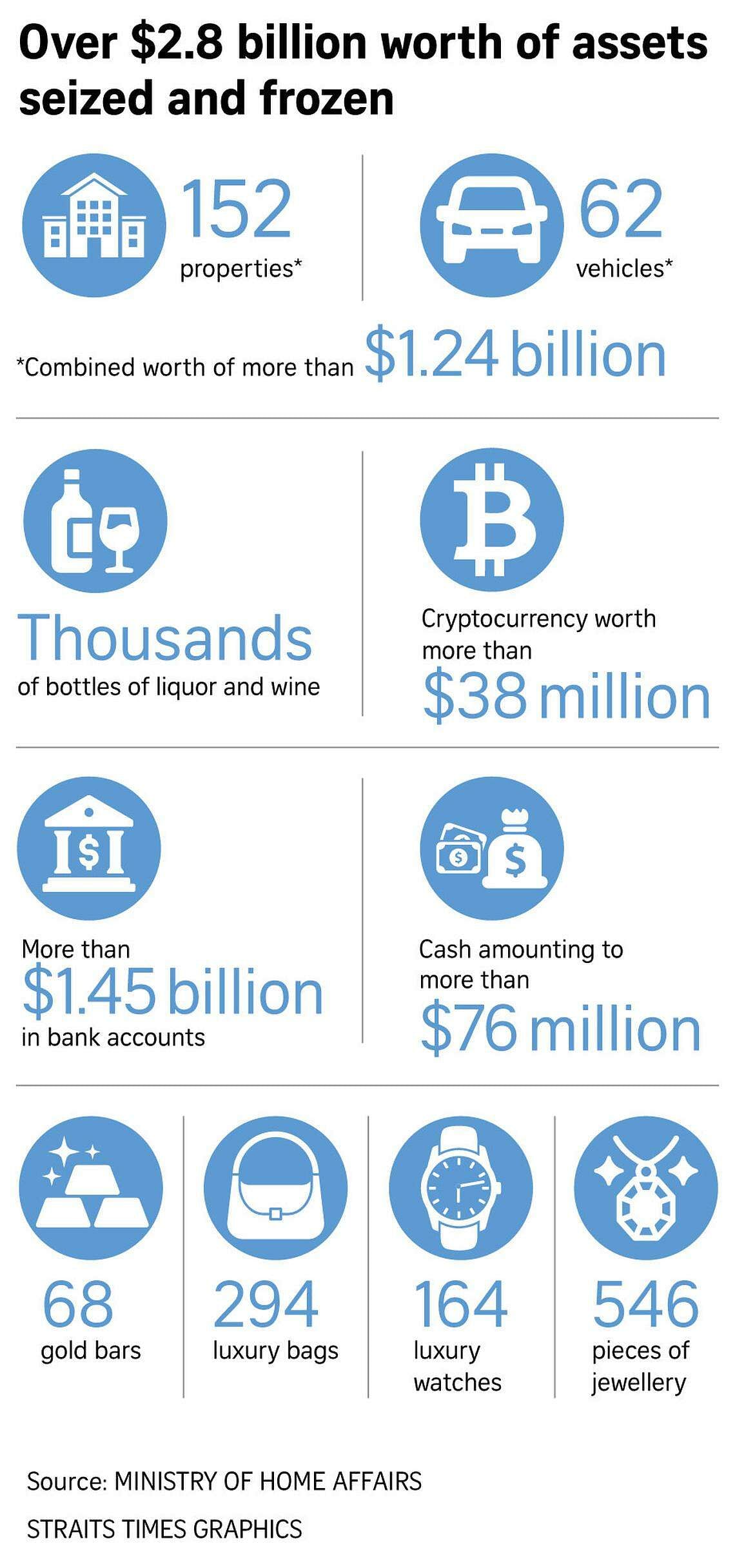
Mrs Teo said there may be more arrests made and assets seized.
The police had said on Sept 20 that the total value of assets seized and frozen in the case stood at more than $2.4 billion.
Mrs Teo added that a number of the people arrested had donated to charities here.
“Some charities have decided on their own to ringfence these donations. Others have made police reports and plan to surrender the monies to the police,” she said.
The Commissioner of Charities will issue an advisory to encourage all charities to review their donor records.
This is to check whether they have received donations from the accused and entities linked to them, and file STRs if needed, the minister added.
The advisory will also include advice to charities on how to handle the monies.
Calling this case one of the largest anti-money laundering operations in the world, Mrs Teo said: “We will not hesitate to take strong enforcement action against people who would use Singapore as a haven to launder proceeds of crime. We will deal with them and their ill-gotten gains to the fullest extent of our laws.”
One or more in money laundering case may be linked to family offices given tax incentives
Property transactions in $2.8b money laundering case likely had minimal impact on prices: Indranee
Mrs Teo noted that from 2020 to 2022, at least 240 people were convicted of money laundering offences, largely for laundering proceeds from domestic scams.
During this period, the police seized more than $1.2 billion worth of assets. This amount is less than half of that involved in the current case.
The minister said many people, including Singaporeans, permanent residents and those on different types of immigration passes, had been interviewed in relation to the case. More will be probed as investigations continue.
She added: “Anyone who is found complicit in... wrongdoing after ongoing investigations will be dealt with in accordance with the law, regardless of their immigration status or whether they are Singapore citizens.”
The minister highlighted the three prongs in Singapore’s anti-money laundering strategy: prevention, detection and enforcement.
Stressing the importance of prevention, Mrs Teo said: “We have a robust legal and regulatory framework. Gatekeepers in various sectors have to comply with anti-money laundering requirements, including the conduct of due diligence.”
The second prong of the Government’s anti-money laundering regime is detection, said the minister.
“Our laws make it a duty for everyone – including but not limited to landlords, property developers, financial institutions and corporate service providers – to report suspicious transactions,” she said.
Finally, enforcement is imperative in Singapore’s anti-money laundering strategy, which is about taking strong action when there is suspicion of money laundering, added Mrs Teo.
To ensure that the country’s strategy to tackle money laundering remains robust, an inter-ministerial committee, led by Second Minister for Finance Indranee Rajah, will be set up to oversee the Government’s anti-money laundering efforts.
Noting that the police’s investigations in this case had strengthened Singapore’s reputation as a serious, high-quality financial hub, Mrs Teo said: “It will strengthen trust and confidence among investors, and Singaporeans, that we run a clean system that stands amongst the tallest in the world.”
When rounding off her statement, she said: “Singapore has in place a robust anti-money laundering regime. We are held in high regard internationally not just as a financial centre, but for our strong, principled and no-nonsense approach to taking down individuals who break our laws.”
She added that the country is taking steps to update its measures to keep pace with evolving risks and trends, and strengthening its capabilities to proactively detect and take firm enforcement action against wrongdoing.
“Nevertheless, this case is a reminder that even the most stringent preventive measures can be circumvented by determined criminals. But it also shows that our system is able to detect suspicious individuals and activities, and that when we do, we have the resolve and capabilities to track them down, and take them to task,” she said.
Why is it a distinction?A distinction is a distinction. Nothing dubious about it!
It's like a prostitute claiming she did the most clients every night.
As a citizen, this has no benefit to me.
Free capital movement - SG becomes money-laundering hub
Free labour movement - SG becomes job hub for foreign talent.
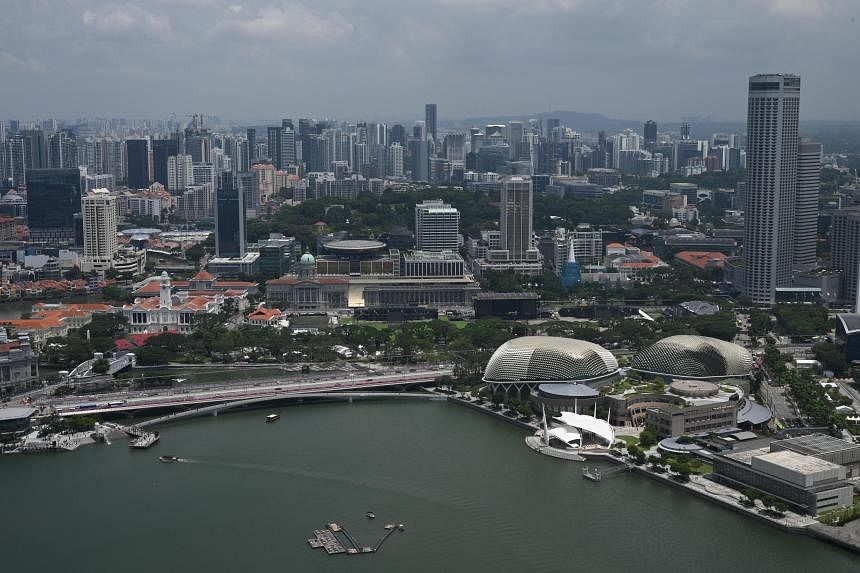
Singapore beat Hong Kong to top the list, while Switzerland, New Zealand and the US rounded out the rest of the top five spots. ST PHOTO: SHINTARO TAY
SEP 21, 2023
Hong Kong’s half-century reign as the world’s freest economy has ended, according to the most recent rankings compiled by a Canadian think-tank that cited eroding judicial independence as one factor.
The Asian financial hub fell to second place in the Economic Freedom of the World Index for the first time since it began in 1970.
The Fraser Institute report released on Tuesday is based on data from 2021, and the organisation said the city’s ranking is expected to fall even further in the following years.
“Hong Kong’s recent turn is an example of how economic freedom is intimately connected with civil and political freedom,” said Mr Matthew Mitchell, senior fellow at the Fraser Institute, in a press release.
Singapore beat Hong Kong to top the list, while Switzerland, New Zealand and the United States rounded out the rest of the top five spots.
The Hong Kong government called the report’s claims on the city’s judiciary “totally groundless and unsupported by objective evidence”, the South China Morning Post reported on Wednesday.
A representative for the Hong Kong government did not immediately respond to a request for comment.
Hong Kong’s slip in the report signals its struggle to maintain its reputation as a global financial centre, after years of pandemic isolation and political instability.
Part of Hong Kong’s longstanding appeal to international business is the reputation of its judicial system.
The city’s courts are distinct from those in China, which are opaque in their actions and effectively controlled by the ruling Communist Party.
Since President Xi Jinping imposed a national security law on Hong Kong in June 2020, their independence has been called into question.
Last month, Chief Executive John Lee fanned those concerns again when he said judges should have followed his wishes and banned a controversial protest song from the Internet, due to its perceived threat to national security.
The United Kingdom decided last year to withdraw top judges from Hong Kong’s highest appeals court, saying China is using the national security law to undermine fundamental rights and freedoms in the former British colony.
The Biden administration in 2021 warned investors about the risks of doing business in Hong Kong.
It said China’s push to exert more control over the financial hub threatens the rule of law and endangers employees and data. BLOOMBERG
Free labour movement - SG becomes job hub for foreign talent.
S’pore ranked ‘world’s freest economy’ by think-tank as Hong Kong loses spot for 1st time since 1970

Singapore beat Hong Kong to top the list, while Switzerland, New Zealand and the US rounded out the rest of the top five spots. ST PHOTO: SHINTARO TAY
SEP 21, 2023
Hong Kong’s half-century reign as the world’s freest economy has ended, according to the most recent rankings compiled by a Canadian think-tank that cited eroding judicial independence as one factor.
The Asian financial hub fell to second place in the Economic Freedom of the World Index for the first time since it began in 1970.
The Fraser Institute report released on Tuesday is based on data from 2021, and the organisation said the city’s ranking is expected to fall even further in the following years.
“Hong Kong’s recent turn is an example of how economic freedom is intimately connected with civil and political freedom,” said Mr Matthew Mitchell, senior fellow at the Fraser Institute, in a press release.
Singapore beat Hong Kong to top the list, while Switzerland, New Zealand and the United States rounded out the rest of the top five spots.
The Hong Kong government called the report’s claims on the city’s judiciary “totally groundless and unsupported by objective evidence”, the South China Morning Post reported on Wednesday.
A representative for the Hong Kong government did not immediately respond to a request for comment.
Hong Kong’s slip in the report signals its struggle to maintain its reputation as a global financial centre, after years of pandemic isolation and political instability.
Part of Hong Kong’s longstanding appeal to international business is the reputation of its judicial system.
The city’s courts are distinct from those in China, which are opaque in their actions and effectively controlled by the ruling Communist Party.
Since President Xi Jinping imposed a national security law on Hong Kong in June 2020, their independence has been called into question.
Last month, Chief Executive John Lee fanned those concerns again when he said judges should have followed his wishes and banned a controversial protest song from the Internet, due to its perceived threat to national security.
The United Kingdom decided last year to withdraw top judges from Hong Kong’s highest appeals court, saying China is using the national security law to undermine fundamental rights and freedoms in the former British colony.
The Biden administration in 2021 warned investors about the risks of doing business in Hong Kong.
It said China’s push to exert more control over the financial hub threatens the rule of law and endangers employees and data. BLOOMBERG
#1: Most expensive car ownership in the world
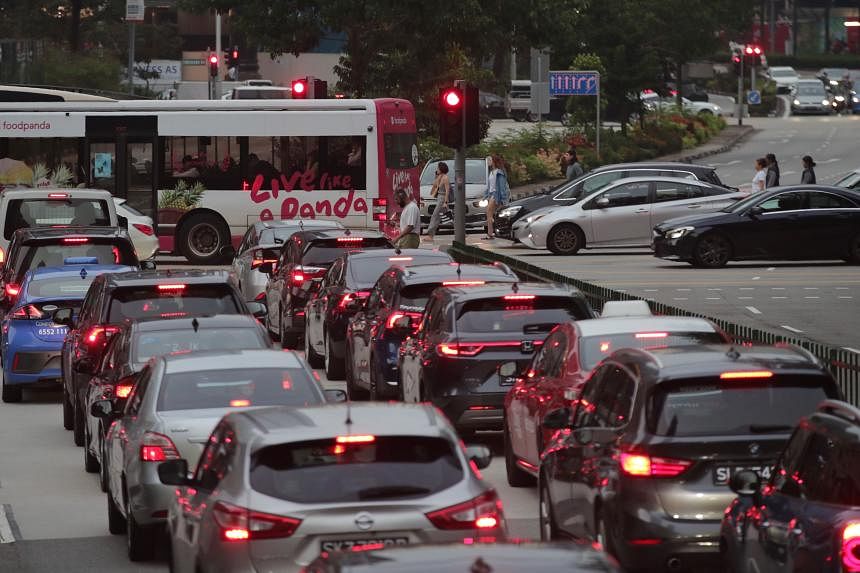
This is the fifth consecutive time that the COE premium for the Open category has broken records. ST PHOTO: GIN TAY

Lee Nian Tjoe
Senior Transport Correspondent
OCT 4, 2023
SINGAPORE – The certificate of entitlement (COE) premium for the Open category breached the $150,000 mark at the latest tender exercise on Wednesday to close at a new all-time high of $152,000.
Industry observers said dealers may be trying to accumulate more Open category COEs to register cars in the remaining two months of the year before rebates are cut from 2024, as such certificates are valid for three months and transferrable.
In addition, dealers are racing to meet their year-end sales targets.
The premium for the Open Category – which can be used for any vehicle type except motorcycles, but ends up being used mostly for bigger cars – surged by 5.09 per cent over the $144,640 record set at the previous tender.
This is the fifth consecutive time this COE category has broken its record.
The COE premium for larger cars with engines above 1,600cc and 130bhp, or more powerful electric vehicles (EVs) above 110 kilowatts, climbed to $146,002, 3.63 per cent above the previous high of $140,889 set two weeks ago.
Smaller car COE ended at $104,000, which was 0.95 per cent lower than the $105,000 record posted at the previous tender.
The commercial vehicle COE premium also edged upwards by 2.5 per cent to finish at $85,900, from $83,801 before.
The COE premium for motorcycles closed at $10,856, 1.46 per cent above the $10,700 before.
The latest result seems to have startled even the motor dealers. When the tender closed at 4pm on Wednesday, the general manager at a dealership wondered out loud: “How is this possible?”
There were 1,039 bids in the COE category for smaller cars and less powerful EVs, compared to an average of less than 900 bids seen in the past four exercises.
Of that number, nearly 200 bids were entered in the final five minutes before the tender closed.
This is the first time since October 2021 that the number of bids broke into four-digits for any type of COE.
It follows an announcement by the Land Transport Authority (LTA) on Sept 29 that an additional 300 COEs for such cars will be reallocated equally between the two tender exercises in October.
The LTA said it was reallocating the COEs to help “meet anticipated demand from car buyers following the September announcement of changes to the Vehicular Emissions Scheme (VES)”.
With the revision, most hybrids and some of the more powerful EVs will receive $10,000 less in incentives from 2024.
Besides the reduced incentives, VES will also be made stricter with tightened pollutant thresholds.
At the same time, a new testing protocol to qualify cars for sale will kick in from Jan 1, 2024, and it is expected to give a less favourable rating than existing test standards.
Some cars that are currently in the neutral band and receive no incentives will be subjected to a penalty of $15,000 under the new regime.
Motor dealers said this is a significant enough reason to rush to sell affected cars within 2023.
If there was any surge in demand for hybrid cars to get the higher VES rebates before the new year, there was little sign of it at many showrooms, which have been quiet since the last tender exercise.
Mr Nicholas Wong, general manager of Honda agent Kah Motor, attributed the high number of bids recorded to fleet vehicle owners, adding that it would be “quite impossible” for dealers to collect so many orders since the last tender.
Wednesday’s tender is the second last exercise under the current three-month period. The LTA is expected to announce the COE supply for November to January in the coming weeks.
Motor dealers said that even if there would be more COEs available in the coming tenders, the combined pressure of revised VES incentives and the need to meet annual sales targets means it is unlikely that premiums will come down this year.
Ms Corinne Chua, Wearnes Automotive’s managing director for Volvo Cars, said that if motor dealers are anticipating a rush to get the higher incentives before the new year, the COE premium may hit “$160,000 or more.”
Open category COE hits $152,000, large car COE reaches another high

This is the fifth consecutive time that the COE premium for the Open category has broken records. ST PHOTO: GIN TAY

Lee Nian Tjoe
Senior Transport Correspondent
OCT 4, 2023
SINGAPORE – The certificate of entitlement (COE) premium for the Open category breached the $150,000 mark at the latest tender exercise on Wednesday to close at a new all-time high of $152,000.
Industry observers said dealers may be trying to accumulate more Open category COEs to register cars in the remaining two months of the year before rebates are cut from 2024, as such certificates are valid for three months and transferrable.
In addition, dealers are racing to meet their year-end sales targets.
The premium for the Open Category – which can be used for any vehicle type except motorcycles, but ends up being used mostly for bigger cars – surged by 5.09 per cent over the $144,640 record set at the previous tender.
This is the fifth consecutive time this COE category has broken its record.
The COE premium for larger cars with engines above 1,600cc and 130bhp, or more powerful electric vehicles (EVs) above 110 kilowatts, climbed to $146,002, 3.63 per cent above the previous high of $140,889 set two weeks ago.
Smaller car COE ended at $104,000, which was 0.95 per cent lower than the $105,000 record posted at the previous tender.
The commercial vehicle COE premium also edged upwards by 2.5 per cent to finish at $85,900, from $83,801 before.
The COE premium for motorcycles closed at $10,856, 1.46 per cent above the $10,700 before.
The latest result seems to have startled even the motor dealers. When the tender closed at 4pm on Wednesday, the general manager at a dealership wondered out loud: “How is this possible?”
There were 1,039 bids in the COE category for smaller cars and less powerful EVs, compared to an average of less than 900 bids seen in the past four exercises.
Of that number, nearly 200 bids were entered in the final five minutes before the tender closed.
This is the first time since October 2021 that the number of bids broke into four-digits for any type of COE.
It follows an announcement by the Land Transport Authority (LTA) on Sept 29 that an additional 300 COEs for such cars will be reallocated equally between the two tender exercises in October.
The LTA said it was reallocating the COEs to help “meet anticipated demand from car buyers following the September announcement of changes to the Vehicular Emissions Scheme (VES)”.
With the revision, most hybrids and some of the more powerful EVs will receive $10,000 less in incentives from 2024.
Besides the reduced incentives, VES will also be made stricter with tightened pollutant thresholds.
At the same time, a new testing protocol to qualify cars for sale will kick in from Jan 1, 2024, and it is expected to give a less favourable rating than existing test standards.
Some cars that are currently in the neutral band and receive no incentives will be subjected to a penalty of $15,000 under the new regime.
Motor dealers said this is a significant enough reason to rush to sell affected cars within 2023.
If there was any surge in demand for hybrid cars to get the higher VES rebates before the new year, there was little sign of it at many showrooms, which have been quiet since the last tender exercise.
Mr Nicholas Wong, general manager of Honda agent Kah Motor, attributed the high number of bids recorded to fleet vehicle owners, adding that it would be “quite impossible” for dealers to collect so many orders since the last tender.
Wednesday’s tender is the second last exercise under the current three-month period. The LTA is expected to announce the COE supply for November to January in the coming weeks.
Motor dealers said that even if there would be more COEs available in the coming tenders, the combined pressure of revised VES incentives and the need to meet annual sales targets means it is unlikely that premiums will come down this year.
Ms Corinne Chua, Wearnes Automotive’s managing director for Volvo Cars, said that if motor dealers are anticipating a rush to get the higher incentives before the new year, the COE premium may hit “$160,000 or more.”
Most expensive car ownership in the world.
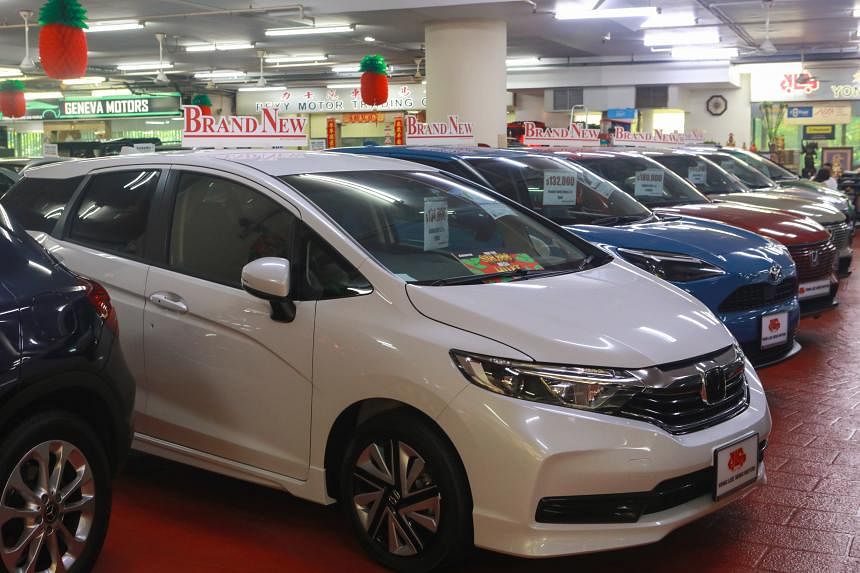
The COE for larger cars with engines above 1,600cc or 130bhp, and electric vehicles above 110kW, ended at $150,001. ST PHOTO: RYAN CHIONG

Lee Nian Tjoe
Senior Transport Correspondent
Oct 18, 2023
SINGAPORE - Certificate of entitlement (COE) premiums reached new highs for the two car categories and the Open category at the latest tender exercise on Wednesday.
The COE for larger cars with engines above 1,600cc or 130bhp, and electric vehicles (EVs) above 110kW, ended at $150,001. This marks a 2.74 per cent increase over $146,002 posted at the previous tender.
The premium for the Open Category – which can be used for any vehicle type except motorcycles, but ends up being used mostly for bigger cars – ended at $158,004, up 3.95 per cent over the $152,000 record set at the previous tender.
This is the sixth consecutive time that records were broken for both the large car and Open COE categories.
The COE premium for smaller cars and EVs climbed 1.92 per cent to $106,000 from $104,000 set two weeks ago. The previous record of $105,000 was set just two tender exercises ago, in September.
Commercial vehicle COE premium ended at $84,790, 1.29 per cent below the $85,900 from two weeks ago. This was the only COE category that did not increase.
Motorcycle COE premium was up 3.18 per cent to end at $11,201 from $10,856.
This was the last tender exercise before the next three-month quota period from November to January, where the COE supply will increase by 12.9 per cent.
Records set in three COE categories, Open category COE soars to $158,004

The COE for larger cars with engines above 1,600cc or 130bhp, and electric vehicles above 110kW, ended at $150,001. ST PHOTO: RYAN CHIONG

Lee Nian Tjoe
Senior Transport Correspondent
Oct 18, 2023
SINGAPORE - Certificate of entitlement (COE) premiums reached new highs for the two car categories and the Open category at the latest tender exercise on Wednesday.
The COE for larger cars with engines above 1,600cc or 130bhp, and electric vehicles (EVs) above 110kW, ended at $150,001. This marks a 2.74 per cent increase over $146,002 posted at the previous tender.
The premium for the Open Category – which can be used for any vehicle type except motorcycles, but ends up being used mostly for bigger cars – ended at $158,004, up 3.95 per cent over the $152,000 record set at the previous tender.
This is the sixth consecutive time that records were broken for both the large car and Open COE categories.
The COE premium for smaller cars and EVs climbed 1.92 per cent to $106,000 from $104,000 set two weeks ago. The previous record of $105,000 was set just two tender exercises ago, in September.
Commercial vehicle COE premium ended at $84,790, 1.29 per cent below the $85,900 from two weeks ago. This was the only COE category that did not increase.
Motorcycle COE premium was up 3.18 per cent to end at $11,201 from $10,856.
This was the last tender exercise before the next three-month quota period from November to January, where the COE supply will increase by 12.9 per cent.
SG and Sentosa boasting about having the world's best golf course when land cost is so high in Singapore and Sinkies are paying record high prices for their public housing and cars.
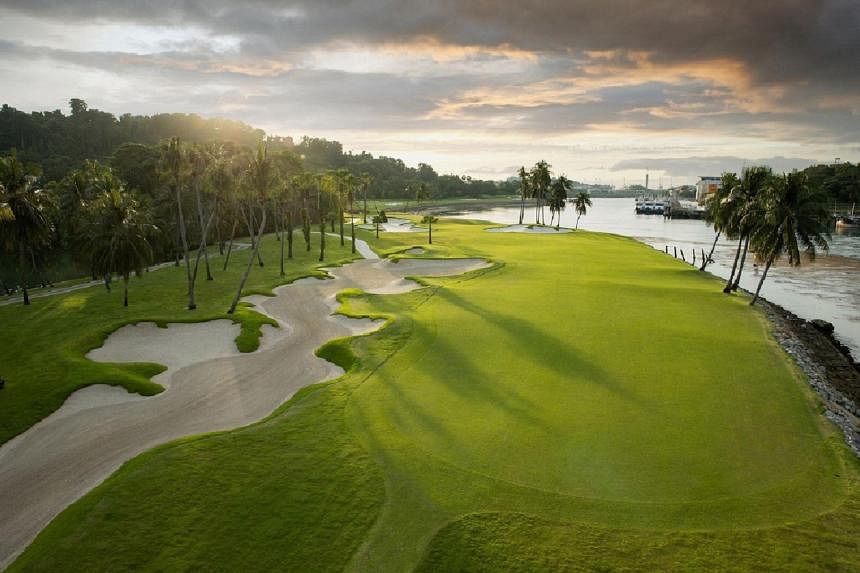
Sentosa Golf Club's Serapong is the first course in Asia to claim the award. PHOTO: SENTOSA GOLF CLUB
Melvyn Teoh
OCT 24, 2023
SINGAPORE – Sentosa Golf Club’s (SGC) Serapong course joined an illustrious list on Monday, winning the World’s Best Golf Course title at the annual World Golf Awards (WGA) in Abu Dhabi.
It follows in the footsteps of just four other venues that have won the accolade, which began in 2014. They are the Old Course at St Andrews and the Championship Course at Carnoustie Golf Links in Scotland, Augusta National Golf Club which hosts the Masters, and 2022 winner Shinnecock Hills Golf Club in the United States.
Serapong, which clinched WGA’s best course in Singapore and Asia in 2022, also retained those honours. SGC had previously won the WGA’s World Best Golf Club distinction in 2019.
SGC’s general manager and director of agronomy Andrew Johnston on Monday described it as a “really big deal”, noting that there are more than 39,000 golf courses around the world and being crowned the best is “very special”.
He added: “It is testament to the dedication and hard work of our entire team and their relentless pursuit of excellence. This recognition reinforces our commitment to delivering an exceptional golfing experience and showcasing Singapore to an international community.
“Over the years, Serapong has risen to global prominence, hosting prestigious events and attracting golfers from around the world.
“It has demonstrated its ability to shine on the world stage and provide invaluable exposure to Sentosa Island and Singapore as a premier golf destination through events such as LIV Golf Singapore.”
The other 13 nominees were clubs in Australia, South Africa, the United States and included Royal Greens in Saudi Arabia, Trump Turnberry Ailsa and the Old Course in Scotland.
On being the first Asian course to claim the award – votes were cast by professionals working in the golf industry and by the public (golf tourism consumers), Johnston, the resident golf course designer, said: “It opens the runway and paves a strong road map for the quality of golf we are delivering on a daily basis at Sentosa, and it continues to put a spotlight on Singapore as a world power in golf.
“Additionally, it could help shift the playing field of bucket-list golf, continuing to open the doors for tourism and bring more golfers to Singapore and Asia.”
The par-71 Serapong, whose land lease is up for renewal in 2030, underwent major renovation in 2020. Besides the LIV event, it has previously staged the men’s Singapore Open tournament and was ranked 55th in the biennial Golf Digest’s World’s 100 Greatest Golf Courses for 2022/2023.
SGC’s other course is New Tanjong, which underwent a $32 million facelift in 2016 and is the venue for the LPGA Tour’s HSBC Women’s World Championship. Its lease is until 2040.
SGC has about 1,600 members, 70 per cent of them local. According to membership brokerage Singolf, membership costs around $565,000 (locals) and $950,000 (foreigners).
Visitors are allowed but the green fees (ranging from $370 to $500 before GST) are among the most expensive in Singapore.
Sentosa’s Serapong named world’s best golf course

Sentosa Golf Club's Serapong is the first course in Asia to claim the award. PHOTO: SENTOSA GOLF CLUB
Melvyn Teoh
OCT 24, 2023
SINGAPORE – Sentosa Golf Club’s (SGC) Serapong course joined an illustrious list on Monday, winning the World’s Best Golf Course title at the annual World Golf Awards (WGA) in Abu Dhabi.
It follows in the footsteps of just four other venues that have won the accolade, which began in 2014. They are the Old Course at St Andrews and the Championship Course at Carnoustie Golf Links in Scotland, Augusta National Golf Club which hosts the Masters, and 2022 winner Shinnecock Hills Golf Club in the United States.
Serapong, which clinched WGA’s best course in Singapore and Asia in 2022, also retained those honours. SGC had previously won the WGA’s World Best Golf Club distinction in 2019.
SGC’s general manager and director of agronomy Andrew Johnston on Monday described it as a “really big deal”, noting that there are more than 39,000 golf courses around the world and being crowned the best is “very special”.
He added: “It is testament to the dedication and hard work of our entire team and their relentless pursuit of excellence. This recognition reinforces our commitment to delivering an exceptional golfing experience and showcasing Singapore to an international community.
“Over the years, Serapong has risen to global prominence, hosting prestigious events and attracting golfers from around the world.
“It has demonstrated its ability to shine on the world stage and provide invaluable exposure to Sentosa Island and Singapore as a premier golf destination through events such as LIV Golf Singapore.”
The other 13 nominees were clubs in Australia, South Africa, the United States and included Royal Greens in Saudi Arabia, Trump Turnberry Ailsa and the Old Course in Scotland.
On being the first Asian course to claim the award – votes were cast by professionals working in the golf industry and by the public (golf tourism consumers), Johnston, the resident golf course designer, said: “It opens the runway and paves a strong road map for the quality of golf we are delivering on a daily basis at Sentosa, and it continues to put a spotlight on Singapore as a world power in golf.
“Additionally, it could help shift the playing field of bucket-list golf, continuing to open the doors for tourism and bring more golfers to Singapore and Asia.”
The par-71 Serapong, whose land lease is up for renewal in 2030, underwent major renovation in 2020. Besides the LIV event, it has previously staged the men’s Singapore Open tournament and was ranked 55th in the biennial Golf Digest’s World’s 100 Greatest Golf Courses for 2022/2023.
SGC’s other course is New Tanjong, which underwent a $32 million facelift in 2016 and is the venue for the LPGA Tour’s HSBC Women’s World Championship. Its lease is until 2040.
SGC has about 1,600 members, 70 per cent of them local. According to membership brokerage Singolf, membership costs around $565,000 (locals) and $950,000 (foreigners).
Visitors are allowed but the green fees (ranging from $370 to $500 before GST) are among the most expensive in Singapore.
Wow...since our satik professors are so brainy de woh...we should teach AMDK how to make Nuclear Reactor like that mah#5
How do NUS and NTU rank in terms of safety for their students? Safety from rape, molest, peeping toms?
What are the universities' priorities?
To ensure a safe learning place for their students, or to be ranked high academically for the professional advancement of the dons and professors?
NUS and NTU continue to rank well globally in QS university rankings, NTU materials science course overtakes MIT for top rank

Overall, NUS ranked 11th out of 1,000 universities, while NTU came in 13th.PHOTOS: ST FILE

Ng Wei Kai
4 MAR 2021
SINGAPORE - The country's two oldest universities have topped the latest global rankings in specific subject areas.
Nanyang Technological University (NTU) has overtaken Massachusetts Institute of Technology to become the world's leading institution for the study of materials science, according to a league table compiled by Britain-based Quacquarelli Symonds (QS), a higher education analysis company.
It also placed the National University of Singapore (NUS) petroleum engineering programme at number one, a position it also attained last year out of 151 contenders.
Last year, NTU's materials science programme was ranked 3rd out of about 400 programmes worldwide.
Overall, NUS ranked 11th out of 1,000 universities, while NTU came in 13th. Last year, both universities tied for 11th place.
"The consistent improvements made by Singaporean institutions in our rankings are the result of a decade of investment and strategising," said Mr Ben Sowter, QS's senior vice president of professional services.
"It was in 2010, after all, that the Singaporean government inaugurated the Singapore Universities Fund, with a view to avoiding the sort of downturn-driven real-terms funding cuts that have beleaguered universities across the world."
The QS analysis also found Singapore to be the fourth best higher education system in the world after the United States, Britain and Switzerland, and first in Asia based on its share of programmes in the top 10 globally.
"Singapore is home to more world-class programmes than any other Asian higher education system: it has four times as many top-10 programmes as China's six and eight times as many as Japan's three," it added.
The two local universities had 24 degree programmes in the top 10 globally - 16 from NUS, eight from NTU.
Several degree courses made large jumps in the rankings. NUS's computer science and information systems course shot up from 12th in 2020 to 4th place this year while the mechanical, aeronautical and manufacturing programme at NUS jumped from 11th to 5th.
QS evaluated around 5,000 universities, taking into account factors such as academic reputation, standing with employers, faculty-to-student ratios and citations per faculty.
An NTU spokesperson said: "This is a testament to the achievements of our faculty and students ... and will position NTU well to address major challenges ... such as climate change and global pandemics.
NUS senior deputy president and provost Professor Ho Teck Hua said: "The university has top-10 placement for 16 of our programmes, up from four last year. Overall, NUS is placed in the top 20 for 28 out of the 37 programmes in which it was ranked.
"It is a wonderful achievement by our talented faculty members."
It helps Singaporeans to move to a place of low cost living easily.1 Does a powerful international passport help Singaporeans in their cost of living, quality of life, jobs?
Migrate la!!!! Idiots keep getting scammed by PAP but then complain about Nigerian scam, china scam, bank scam, phone scam.
Singapore maintains spot as world’s most expensive city, tied with Zurich: EIU

Vivienne Tay
Thu, Nov 30, 2023Singapore continues to observe high price levels across several categories, such as transport.
SINGAPORE maintained its spot as the most expensive city in the world, tying with Zurich, an annual survey showed on Thursday (Nov 30).
The pair overtook New York, which tied with Singapore last year for the pole position, based on findings from Economist Intelligence Unit’s (EIU) cost-of-living survey.
The survey, designed to help organisations calculate cost-of-living allowances and build compensation packages for expatriates and business travellers, showed that the global cost-of-living crisis is not over despite inflation moderating.
On average, prices rose by 7.4 per cent yearly in local currency terms. Although price growth slowed from the 8.1 per cent reported in the same period last year, it remains significantly above the 2017 to 2021 trend.
The Republic continued to observe high price levels across several categories, notably transport due to strict controls on car numbers.
“It is also among the most expensive cities for clothing, groceries and alcohol, due to its success as a premier location for business investment,” EIU noted.
Zurich’s rise, meanwhile, reflects the strength of the Swiss franc. The city also has high prices for groceries, household goods and recreation.
“The supply-side shocks that drove price increases in 2021 to 2022 have reduced since China lifted its Covid-19 restrictions in late 2022, while the spike in energy prices seen after Russia invaded Ukraine in February 2022 has also eased,” said Upasana Dutt, head of worldwide cost of living at EIU.
She noted that Asia continues to have relatively low price increases on average, with four Chinese and two Japanese cities among the biggest movers down the ranking this year.
Despite upside risks, EIU expects inflation to decelerate further in 2024, as the lagged impact of interest-rate rises impacts economic activity and thus, consumer demand.
The 10 most expensive cities are Singapore and Zurich (tie), Geneva and New York (tie), Hong Kong, Los Angeles, Paris, Copenhagen, Tel Aviv and San Francisco.
Worldwide Cost of Living: Singapore and Zurich top the ranking as the world’s most expensive cities
Thu, 30th Nov 2023- EIU’s Worldwide Cost of Living survey found that, on average, prices rose by 7.4% year on year in local-currency terms. Price growth has slowed from the 8.1% reported in last year’s survey, but remains significantly above the trend in 2017-21.
- Singapore maintained its pole position as the world’s most expensive city for the ninth time in the last eleven years, tying with Zurich (Switzerland) and overtaking New York (US), which fell to third place this year.
- Although three US cities (New York, Los Angeles, and San Francisco) are among the top ten, North American cities have, on average, slipped down our cost-of-living ranking.
- Western Europe accounts for four of the top ten most expensive cities in our ranking, owing to sticky inflation in groceries and clothing along with appreciation of the region’s currencies.
- The Russian cities of Moscow and St Petersburg experienced the biggest drop in the ranking as sanctions weakened the rouble.
- Of the ten categories in our price index, utility prices rose the most slowly over the past year, reflecting the waning impact of Russia’s invasion of Ukraine in 2022. Grocery prices, however, continue to rise strongly.
Singapore and Zurich were the most expensive cities in this year’s survey. Zurich moved up from sixth place to join Singapore at the top, bumping New York (which tied with Singapore for first place last year) down to third place. Zurich, which is back at the top after three years, moved up due to the strength of the Swiss franc, as well as high prices for groceries, household goods and recreation. Overall, our top ten this year consists of two Asian cities (Singapore and Hong Kong), four European cities (Zurich, Geneva, Paris and Copenhagen), three US cities (New York, Los Angeles and San Francisco) and Tel Aviv in Israel. Our survey was conducted before the start of the Israel-Hamas war, which has affected the exchange rates in Israel and may have made it harder to procure some goods in Tel Aviv, thereby affecting prices.
Globally, utility prices (household energy and water bills) witnessed the slowest inflation of the ten categories covered in our survey. This was the fastest-rising category in 2022 and the moderation suggests an easing of the energy price shocks caused by Russia’s invasion of Ukraine. Grocery, on the other hand, saw the fastest pace of price growth. Food inflation has been sticky across the world as many manufacturers and retailers have passed on higher costs to consumers and the increasing frequency of extreme weather events continues to keep supply-side risks elevated.
A free summary report can be downloaded here.
EIU’s Worldwide Cost of Living 2023 survey compares the prices of more than 200 goods and services in 173 major cities.
Besides easing supply-side tensions, the hawkish monetary policy stance adopted by the US Federal Reserve has helped moderate inflation in the country by our calculations. Moreover, several foreign currencies have appreciated against the US dollar in 2023. Both these factors have led to the majority of the 22 US cities covered in our survey falling down the ranks. Even then three US cities (New York, Los Angeles, and San Francisco) are among the top ten. In New York prices were up by 1.9%. Although some grocery items, such as eggs and beef, and recreational activities saw increases, prices remained subdued for others, including petrol and clothing.
On the other hand, cities in Latin America and western Europe have moved up. The Mexican cities of Santiago de Querétaro and Aguascalientes were the biggest movers up the ranking, with the peso proving to be one of the strongest emerging market currencies in 2023, on the back of interest-rate rises and strong inward investment. European cities, in general, have moved up the ranks amid sticky inflation as well as appreciation in the euro and other local currencies in the region. Asia continues to see relatively low price increases on average. Four Chinese cities (Nanjing, Wuxi, Dalian and Beijing) and two Japanese ones (Osaka and Tokyo) were among the biggest movers down the ranking this year.
A free summary report can be downloaded here.“The supply-side shocks that drove price increases in 2021-22 have reduced since China lifted its covid-19 restrictions in late 2022, while the spike in energy prices seen after Russia invaded Ukraine in February 2022 has also eased. However, the cost-of-living crisis is hardly over and price levels remain much above historical trends. We expect inflation to continue to decelerate in 2024, as the lagged impact of interest-rate rises starts affecting economic activity, and in turn, consumer demand. But upside risks remain—further escalations of the Israel-Hamas war would drive up energy prices, while a greater than expected impact from El Niño would push up food prices even further.”
UPASANA DUTT, HEAD OF WORLDWIDE COST OF LIVING AT EIU
Similar threads
- Replies
- 12
- Views
- 789
- Replies
- 0
- Views
- 422
- Replies
- 7
- Views
- 641
- Replies
- 11
- Views
- 565
- Replies
- 17
- Views
- 805
